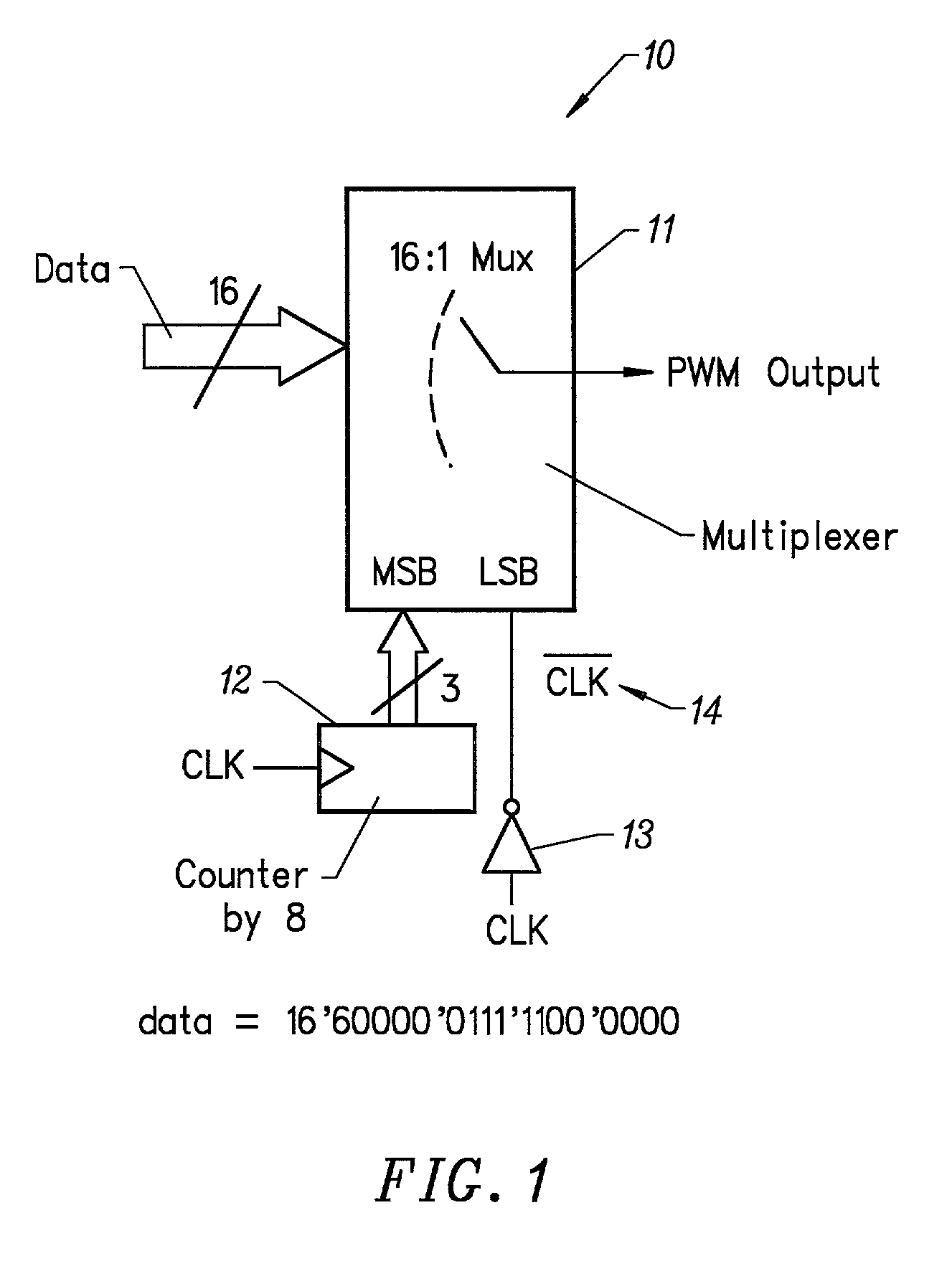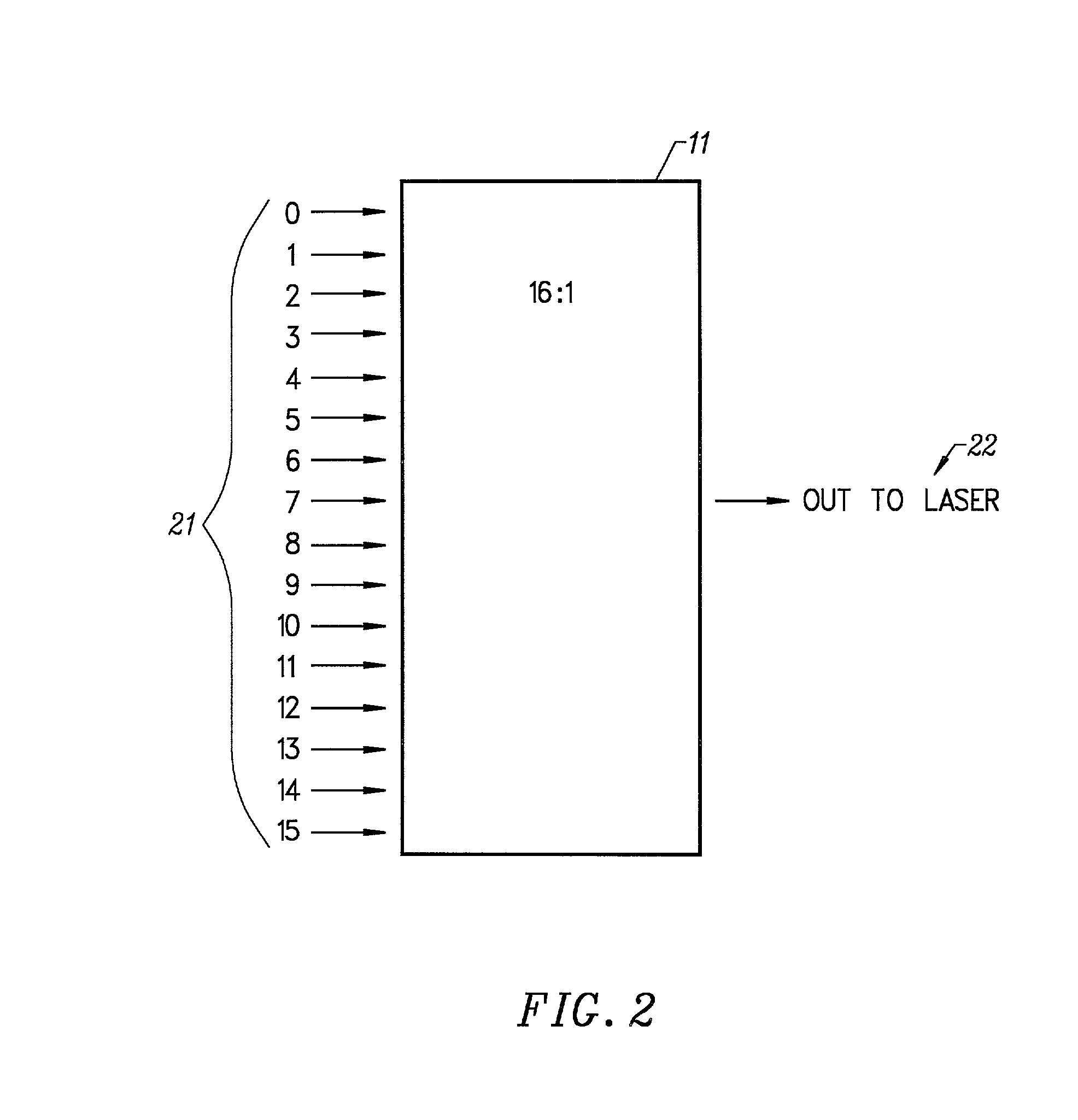Digital pulse width modulator for use in electrostatic printing mechanisms
- Summary
- Abstract
- Description
- Claims
- Application Information
AI Technical Summary
Benefits of technology
Problems solved by technology
Method used
Image
Examples
Embodiment Construction
[0012]Turning first to FIG. 1, a system 10 for producing a variable width pulse in an electrostatic printing mechanism is shown. Digital information supplied to an electrostatic printing mechanism of, for example, a laser printer specifies grayscale intensity of pixels to be printed. However, the digital information must be converted to a format appropriate for directly driving the laser, or other light-emitting element. Unlike the digital is pulse width modulators (PWM) conventionally used with electrostatic printing devices, which output one bit on the rising edge of each pulse of a timing device such as a pixel clock, the invention outputs one bit on each of the rising and falling edges of the clock pulse, effectively doubling the throughput of the PWM. Thus, while using the same clock as a conventional PWM, the invention is able to specify each pixel by a 16-bit value, providing much finer resolution, because the 16-bit value can specify more than sixty-five thousand discrete va...
PUM
 Login to View More
Login to View More Abstract
Description
Claims
Application Information
 Login to View More
Login to View More - R&D
- Intellectual Property
- Life Sciences
- Materials
- Tech Scout
- Unparalleled Data Quality
- Higher Quality Content
- 60% Fewer Hallucinations
Browse by: Latest US Patents, China's latest patents, Technical Efficacy Thesaurus, Application Domain, Technology Topic, Popular Technical Reports.
© 2025 PatSnap. All rights reserved.Legal|Privacy policy|Modern Slavery Act Transparency Statement|Sitemap|About US| Contact US: help@patsnap.com



